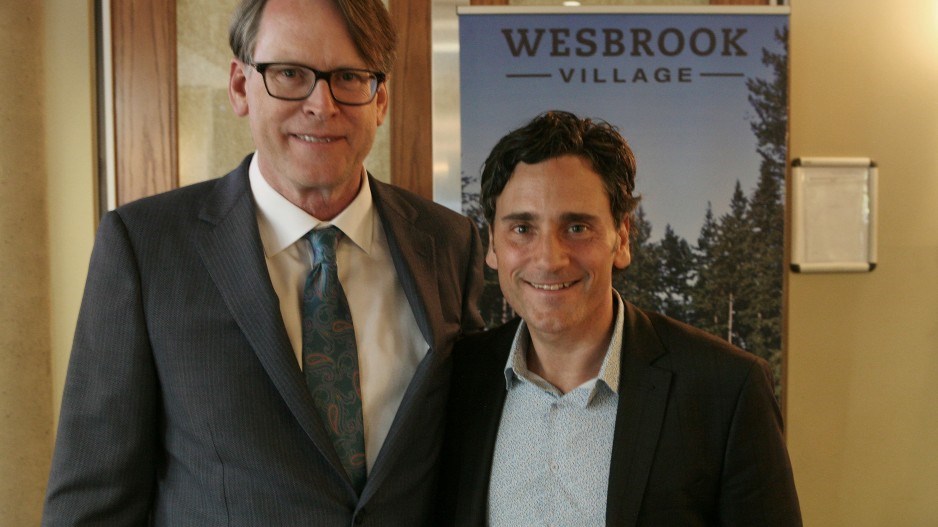By Susan M. Boyce
The year was 1994. The Vancouver Canucks took their second shot at the Stanley Cup, Trevor Linden was hot on the ice, and a 28-year-old chartered accountant who was born and raised in East Vancouver had just been appointed corporate controller of Orca Bay Sports & Entertainment, the company now known as Canucks Sports & Entertainment (CSE).
Twenty-one years, three owners, six general managers and six coaches later, Victor de Bonis is still with CSE as its chief operating officer – his third role overseeing the financial complexities unique to the sports industry. Today, his tight-knit management team and forward-thinking business strategies have helped propel the organization to its current status as one of North America’s top sports and entertainment companies, and despite his often gruelling work schedule, he still finds time to act as a director of the senior leadership team, alternate governor for the NHL, vice-president of the Canucks for Kids Fund board, and a Special Olympics British Columbia director.
Premium fan experience
De Bonis joined the Canucks at a pivotal time in their history, and his first challenge was a massive one: to build a state-of-the-art facility that would become known first as GM Place and later as Rogers Arena. He rose to the challenge, not only taking the Canucks downtown from the Pacific Coliseum in East Vancouver, but also bringing the Grizzlies NBA team to town.
In July 2014, when a 20-year food and beverage services agreement with Aramark came to an end, de Bonis saw it as an opportunity to further enhance the fan experience.
“We created a new corporate entity to handle the hospitality services, invested over $4 million into a new kitchen and menus, then created a new employee training and retention program,” de Bonis said. “After all, you can’t deliver a premium product without the right tools.”
“Contracting out to a third party put a distance between us and the fans,” he added. “Now all 1,200 of the hospitality staff are part of the same team, there’s a different feel when you order food or make a purchase in the gift shop.”
Astonishingly, the entire changeover was accomplished in just under 120 days.
Ice meets technology
As technology continues evolving at an ever more rapid rate, keeping fans engaged at all levels has become a critical component of success.
“There’s a whole generation of people who come to the game and are looking at their phone as much as they’re watching the game,” de Bonis said.
Although he admits to having a somewhat love-hate relationship with the digital connectivity many people now consider as much a part of life as their arm, he’s adamant the sports industry needs to embrace this new reality.
“Some arenas block the ability to engage with mobile devices. I believe that’s a mistake. In order to stay relevant, we have to change. If we don’t change, our fan base will go elsewhere – it’s just that simple.”
One key to success in the digital arena is delivering quality content fans can’t find elsewhere – content that often engages them directly with players, coaches and other insiders.
“In old-school sports, there was a clear separation between the fans and the players – that’s no longer true. The Seattle Seahawks were one of the first teams to encourage their fan base to feel like they’re part of the team. They jumped into the stand, coaches talked to the fans, players danced after touchdowns. With Trevor [Linden] now on board, we’re finding new, tech-savvy ways to connect with more and more of our fans.”
De Bonis is, however, pragmatic about the return on investment in technology where a single program can cost six or even seven figures.
“For example, when someone logs onto the Canucks website and purchases a ticket, you really have no way of knowing whether what they saw influenced their decision or whether they would have bought that ticket anyway.”
We are all Canucks
Looking ahead, de Bonis predicts the Canucks will attract an ever more diverse demographic.
“Not many businesses are multicultural to this degree,” he said. “Hockey is Canada’s game, so when people move here it becomes a way to feel like they belong. And even with technology, most people don’t use personal video recorders to record sports, so attending games will always attract people.”
He acknowledged the hours can be long, but for the boy who used to hold the flashlight for the parking attendants at the Pacific National Exhibition during Canucks games, this isn’t just a job – it’s fun.




